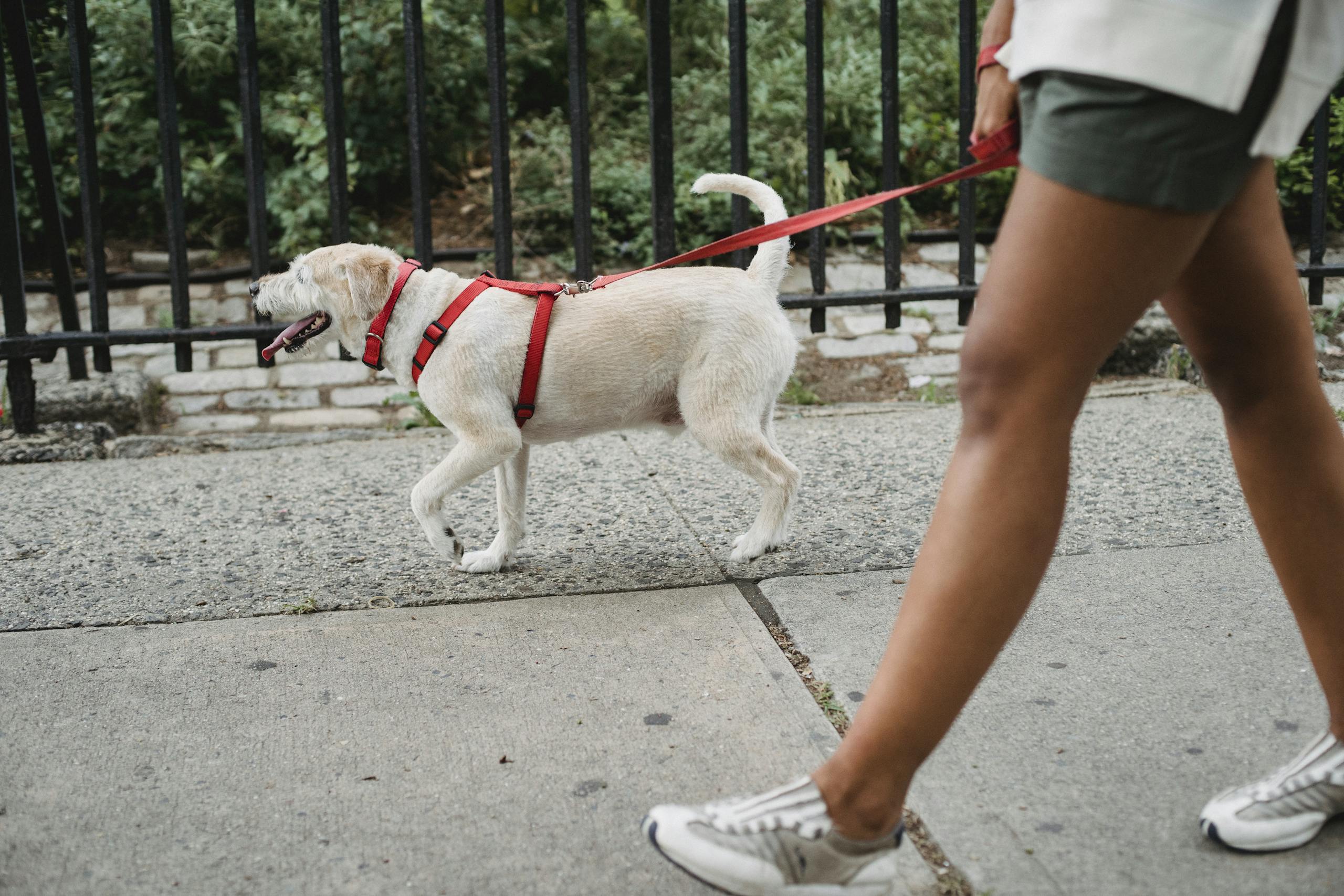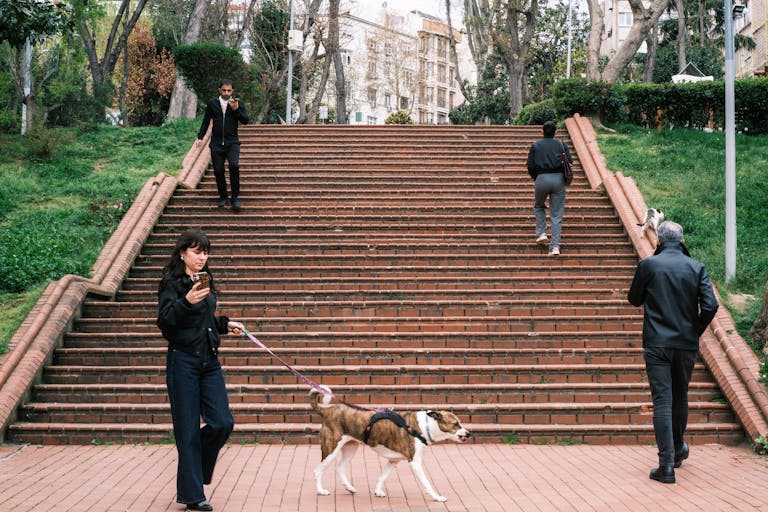How to Help a Reactive Dog Feel Safe Outside – 6 Steps That Build Trust

Does your dog bark, lunge, or freeze when they see other dogs, bikes, or people? You’re not alone—and neither is your dog. Many dogs struggle with overstimulation, fear, or frustration in the outside world. The good news? You can learn how to help a reactive dog feel safe outside, without fear-based tools or harsh corrections.
This guide gives you 6 calming, practical strategies to build safety, trust, and predictability during walks—so your reactive dog can feel safe enough to relax.
What Is Reactivity in Dogs?
Reactivity is an emotional response—not disobedience. It often comes from:
- Fear or insecurity
- Frustration on a short leash
- Lack of coping tools in high-stimulus environments
Signs include:
- Lunging
- Barking
- Growling
- Freezing
- Hypervigilance or scanning
🎯 The key isn’t control—it’s creating a sense of safety.
6 Ways to Help a Reactive Dog Feel Safe Outside
1. Create a Predictable Walk Routine
Uncertainty increases anxiety. Use the same route at the same time of day to create safe predictability.
✅ Stick to calm, low-traffic areas. Avoid busy dog parks, bike paths, or unpredictable urban zones.
2. Keep Distance from Triggers
Every dog has a “threshold”—the distance where they can observe without reacting.
✅ Stay at or beyond that threshold. If needed, turn and calmly walk away.
3. Reward the Calm, Not the Chaos
Many owners wait until their dog reacts to act. Instead, reward before the reaction.
🧀 Carry high-value treats and reward your dog for:
- Noticing a trigger without reacting
- Checking in with you
- Choosing to disengage
💡 Reinforce the decision to stay calm.
4. Build a “Let’s Go” Cue
Train a soft cue to gently guide your dog away from overwhelming situations without tension.
✅ Practice “Let’s go” at home with rewards, then use it during walks to redirect focus without panic or pulling.
5. Short Walks Are Okay
Don’t force long walks just to “burn energy.” Stress is tiring. A calm 10-minute sniff walk is more valuable than a 45-minute meltdown.
🎯 Think quality, not quantity.
6. Use Soundscapes to Regulate Emotion
Before and after walks, use calm-inducing soundtracks like:
- 🌿 Forest loops
- 🫀 Heartbeat rhythms
- 🧘 Ambient guided breathing (for you)
These are available at Pawsly and help regulate both your and your dog’s nervous systems—essential for reactivity work.
Your Energy Matters Too
Dogs mirror our emotional states. If you’re tense, rushed, or embarrassed, they feel it—and escalate.
✅ Breathe deeply before the walk
✅ Keep your body loose and pace slow
✅ Don’t apologize for your dog—protect them
You are their safe space. Act like it, and they’ll begin to believe it.
Recap: How to Help a Reactive Dog Feel Safe Outside
- Create predictable walking patterns
- Avoid high-trigger environments
- Reward calmness early and often
- Build soft cues for redirection
- Use sound therapy to create calm bookends
- Stay emotionally regulated and present
Progress isn’t perfect. But every calm choice your dog makes brings you closer to safety, connection, and confidence—together.
📱 Ready to walk calmer with your reactive dog?
Explore the Pawsly soundscapes, meditations, and emotional tools that help your dog process the world without panic.
👉 Because calm begins before the leash clicks.






